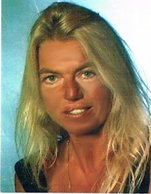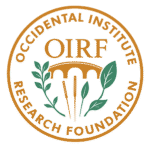Main Focus
Invisible Attackers
Living with Inanimate Nature
For those in a hurry
To prevent disease, it is not a matter of killing germs, but rather of creating a healthy environment and a strong immune system in the body. For example, it can help to cleanse the detoxification and excretory organs such as the liver, intestines, kidneys and skin through naturopathic drainage and detoxification therapies.
Viruses and bacteria have already existed for millions of years and are part of life. So that people can still protect themselves from possible diseases, there are various naturopathic therapy options to support the body’s own regulatory mechanisms.
The medicine of the past 150 years has tried to free people from disturbing and disease-causing germs such as viruses and bacteria. Newer sciences have revealed that humans and germs live in a symbiosis, for mutual benefit. Accordingly, viruses also seem to not only be pathogenic causative organisms, but also to serve our lives.
Louis Pasteur
To this day the formative researcher in medical science was the French chemist, biologist, physician and microbiologist Louis Pasteur (1822-1895). Among other things, he developed the pasteurization process named after him for the preservation of liquid foods such as milk by heating it to kill germs. He was mainly concerned with bacteria, fermentation processes, diseases and their control. His conclusion was that diseases are caused by pathogens. These dangerous germs lurk mainly in the air and could infect the organism at any time. They penetrate from the outside and cause damage inside. The task of medicine is to defend humanity from the attacking microbes. As a preventative measure, he postulated vaccination.
Pierre Jacques Antoine Bechamp
Less well known was the research work of his contemporary, the French physician, biologist and pharmacologist Pierre Jacques Antoine Bechamp (1816-1908). He refuted the teachings of Pasteur and, based on the teachings of Hippocrates, saw the development of illness in us. In his opinion, germs were not something hostile and dangerous that attacked us, but rather the prerequisite for all life. Bechamp recognized that germs appeared in the body in injured or dying tissue and were not the cause, but rather a symptom of, the disease. Once their work in the healing process is done, they turn back into healthy body cells.
He also contradicted the belief of science at the time that the cell is the smallest unit of life. According to his research, the cell was composed of even the smallest units. He defined these building blocks as microzymes, microscopic fermentation organisms. They are the germs of life and formed the cell, but are not bound to it. These germs of life are always in motion, forming the fertile soil from which life emerges and to which it returns. According to Bechamp, germs of life were immortal, they are part of the human organism from origin to death. Even after death, they animated the earth and ensured the continuation of the cycle of life. Without germs, there can be no life. Bechamp repeatedly emphasized that organisms are not germ-free. They follow certain laws and are changeable, polymorphic. He described Pasteur’s statement that germs are fundamentally hostile and ready to attack other organisms, making disease an unchangeable fate, as “monstrous”.
Supposedly, Pasteur corrected his “germ theory” on his deathbed with the statement: “The microbe is nothing, the milieu is everything”. This means that it is not the germs that are bad, but rather a sick and toxic environment in which they can no longer develop naturally. But Bechamp’s research results went unnoticed and even remained under lock and key for a long time. Pasteur’s point of view was followed and the fight against germs began.
Endosymbiont Theory
Today it is widely recognized that many germs and/or microorganisms have entered our organism in the history of development, some of which even produce our energy. According to the endosymbiont theory, our mitochondria developed from independent single-celled organisms, the proteobacteria. In the course of evolution, the interaction of these two cellular organisms developed into a mutual dependence, in which neither partner could survive without the other, and an endosymbiosis developed.
Antibiotics kill disease-causing bacteria, but they can also be directed against beneficial bacteria.
Microbiome
Since the discovery of the microbiome, it has been known that humans have about ten times as many microbes as somatic cells, with an adult consisting of 1014 or 100 trillion individual cells. The term microbiome refers to the totality of all microorganisms, especially bacteria and viruses, that live on and in a macroorganism. The microorganisms mainly colonize the intestines and skin, but also the lungs, the mouth and nasopharynx, as well as the urogenital tract. They have an effect on the immune system, metabolism and hormonal system. The composition of the microbiome is individual, dynamic and changes very quickly depending on its environment. It is fundamentally influenced by genetics, age, diet, medication intake, lifestyle, and circadian rhythms.
All things considered, the microbiome is a complex ecosystem that only functions through perfect interaction between the various organisms. Humans and their microorganisms form a symbiotic community for mutual benefit. The intestinal bacteria play a major role in digestion, they regulate the function of the intestinal epithelium and influence mucosal immune responses. Due to the dense occupation of habitats on the intestinal wall, there is no room for pathogenic organisms. In this sense, the “good” bacteria defend us against the “bad” ones and train our immune system. Studies have shown that the developing intestinal flora contributes decisively to the formation of our immune system, whereas in the absence of germs in the intestine, only a strongly retarded immune system develops. If the microbiome gets out of balance and into dysbiosis, disease-causing germs can settle. Such disorders can be triggered by a variety of factors. Consequently, treatment with antibiotics kills disease-causing bacteria, but it can also be directed against beneficial bacteria. Conditions such as obesity, diabetes and inflammatory bowel disease can occur as a result of a disturbed microbiome. But they can also be triggers themselves.
The virome plays an important role in the intestinal barrier for the local defense against pathogenic germs.
Virom
Part of the microbiome is the virome, which is formed by viruses. At the latest since Sars-CoV-2, everyone is talking about viruses. Globally, they are the most common microbes, are omnipresent and on average ten times more common than bacteria.
The term virus comes from Latin and means mucus, juice, poison. In medicine, a virus is by definition an infectious structure that can consist of nucleic acids, either DNA or RNA, proteins and, if necessary, a viral envelope. Because viruses do not have their own metabolic apparatus and depend on host cells to reproduce, they are usually not counted as living beings. However, they are to be regarded as close to life, since they can control their replication and have the ability to evolve. According to their classification, a distinction can be made between coarsely enveloped and non-enveloped RNA and DNA viruses. Viruses were first made visible in 1940 using electron microscopy. The origin of the viruses is not yet known.
The virome also forms an essential part of the intestinal barrier for the local defense against pathogenic germs. The basis is epithelial cells of the intestinal mucosa. On top of it is a thick layer of mucus that protects the intestinal epithelial cells and houses a specific community of viruses, namely the viruses of the bacteria, the so-called phages (bacteriophages adherent to mucus). This has an essential function. Viruses help to keep the intestinal mucosal cells on constant alert so that the intestine does not become inflamed despite all the infection processes.
Viral Genetic Material
In 2000, a large-scale project, the Human Genome Project, succeeded in decoding the sequence of the human genome, the human genetic material. A surprising result was that a large part of the human genome consists of viral DNA. These viral components come mainly from retroviruses that infected the ancestors of humans 40 to 70 million years ago and managed to permanently incorporate their genetic material into the genome of their host. Most human endogenous retroviruses are inactive, but a small proportion are thought to play a role in the development of some autoimmune diseases. Other parts are responsible for the development and regulation of important organs, such as the placenta in mammals. In this way, the viral sequences have taken on a beneficial function for humans. They have long since lost their harmful effect. The virus has adapted to humans and humans have come to terms with the parasite in their genetic makeup. Viruses are therefore not only pathogens, but have also driven the evolution of most living beings, including us humans.
Infections
Exposure to previously unknown substances can disturb the flow balance of the organism and therefore triggers defensive reactions, which are usually accompanied by certain symptoms of illness. As a result, biochemical processes are initiated among other things, by which microorganisms, enzymes and minerals are involved. After immunomodulation and a certain period of adaptation and regeneration, immunity to the respective antigen develops through specific antibodies and the temporary imbalance can be restored. If the organism is permanently overloaded with new noxious agents, this time of adaptation is missing. If defense mechanisms are too weak or there is a disturbed microbiological symbiosis, pathogenic germs can then dominate, such as Epstein Barr virus, human papillomaviruses, hepatitis viruses, and numerous chronic, sometimes serious clinical pictures, including up to cancer.
Disturbances of this symbiosis are mainly caused by denatured food, degenerated lifestyle, environmental toxins, globalization, medications, electromagnetic fields, permanent stress and much more. Every chronic disease can therefore be considered in the context of an imbalance of microbes, too many toxins and permanent stress. As Hippocrates said: “Death sits in the intestine.”
Any chronic disease can be considered in the context of an imbalance of microbes, too many toxins and permanent stress.
Therapy
Conventional medicine administers antibiotics for bacterial infections, while for viral infections, treatment is usually symptomatic with physical rest, the administration of fluids and painkillers. If necessary, vaccination is recommended as a preventive measure.
Naturopathic Treatment Options
The basis of a holistic treatment should on the one hand consist of remediating the terrain, cleansing the organism, eliminating toxins, and on the other stimulating the metabolism and strengthening the immune system. An excellent possibility to cleanse the milieu as well as improve the basic regulation and stimulate the detoxification and excretory organs (such as the liver, intestines, kidneys, skin and the pulmonary-bronchial system) are the traditional naturopathic drainage and detoxification therapies.
Medicinal plants such as Echinacea also have antiviral properties.
Drainage Via the Organs By Means of Medicinal Preparations
For drainage, the Phoenix drainage concept with spagyric remedies has proven itself in my practice. It starts over three days with the liver remedy Silybum spag., 60 drops three times a day. Then the kidney remedy Solidago spag. in the same dosage and finally over three days the remedy Urtica-Arsenicum spag. as an activator of skin, mucous membrane and tissues. The latter remedy should only be used in a dosage of three times 20 drops a day, otherwise the release of toxins is too intensive. The intake now begins again with the liver remedy Silybum spag and is continued in the same rhythm. The cycle must be repeated up to a total duration of 45 days. Concurrently, the lymph remedy Thuja-Lachesis spag. Is administered three times a day 20 drops over the entire course of treatment to remove the waste products. I recommend to my patients to put the entire daily dose in the morning into about 1.5 liters of still water and to drink evenly throughout the day. This ensures that a sufficient amount of fluid is absorbed to remove the dissolved substances from the body. The intake in children is one drop per kilogram of body weight, except for Urtica-Arsenicum spag. with 1/3 drops per kilogram of body weight.
Lactic acid fermented foods can stabilize the intestinal flora.
Intestinal Cleansing and Nutrition
If necessary, especially after previous antibiotics, a revitalization and stabilization of the intestinal flora should be carried out. I also give probiotics, preparations with viable microorganisms such as lactic acid bacteria and yeasts. In general, the symbionts should be well nourished, especially by eating a plant-based diet. Wild ferments, that is to say lactic acid fermented foods that are produced by fermenting fruit or vegetables and salt with the help of microorganisms in the absence of air, are also recommended. Another possibility to clear and purify body, soul and spirit is fasting.
Activation of Cell Metabolism, Cellular Respiration and the Immune System
For biomodulation, promotion of tissue circulation and increased excretion of waste products, I use the ampoule preparation Juv 110 injection solution, which I inject once or twice a week, depending on the indication and constitution, with one to two milliliters respectively. This preparation is a versatile homeopathic remedy that leads to good results in the field of neoplasms and precancerous lesions, cystic tissue changes, diseases of the lymphatic system, immune deficiency, metabolic diseases as well as in the retuning therapy for allergic events.
Phytotherapy
In the field of medicinal plants with antiviral properties, Echinacea (Coneflower), Artemisia annua (Annual Mugwort), Umckaloabo (Cape Pelargonium) and Cistus (Rock flower) should be mentioned, among others.
Micronutrients
In the case of increased susceptibility to infections, the temporary substitution of Vitamin D3, Zinc, Selenium, Vitamin C, Vitamin E, Vitamin B6 and Iron should also be considered.
Result
In nature, everything is connected and humans are only a small part of it. Viruses and bacteria evolved many hundreds of millions of years ago, long before humans existed. They are part of our lives and we depend on peaceful coexistence. To prevent disease, it is not a matter of killing germs, but of creating a healthy environment and a strong immune system in the body. In other words, to promote health through natural nutrition and a healthy lifestyle with plenty of exercise in the fresh air. Naturopathic therapy options offer a wide range of possibilities to support the body’s own regulatory mechanisms.

An Exclusive Translated Article for P2P Supporters
From the Monthly Publications of P2P
Published April 2025
From an article in Naturheilpraxis, Volume 78, March 2025
Translation & redaction by: Carolyn L. Winsor, P2P Consulting
© Copyright 2025, Naturheilpraxis, Susanne Rothörl, Germany
Digital and online translation assistance utilized.
Literature
The complete list of references can be requested from the original publisher.



